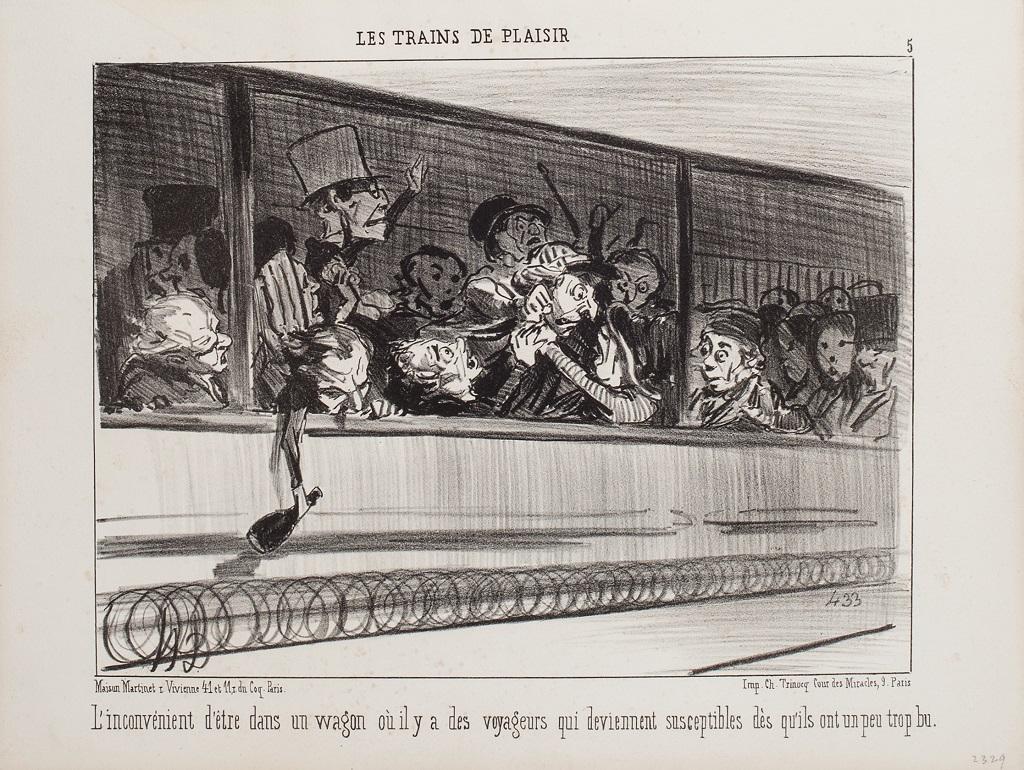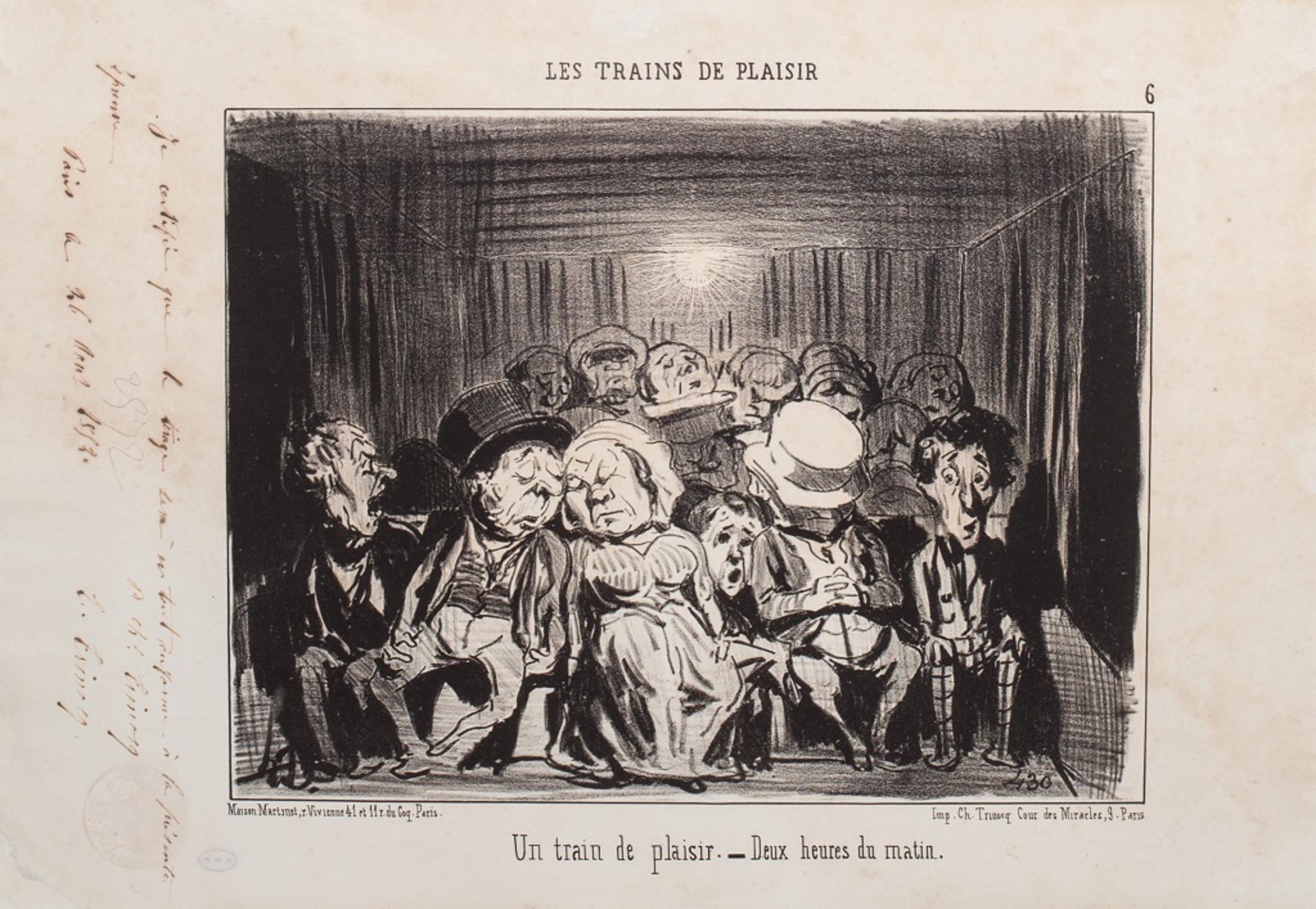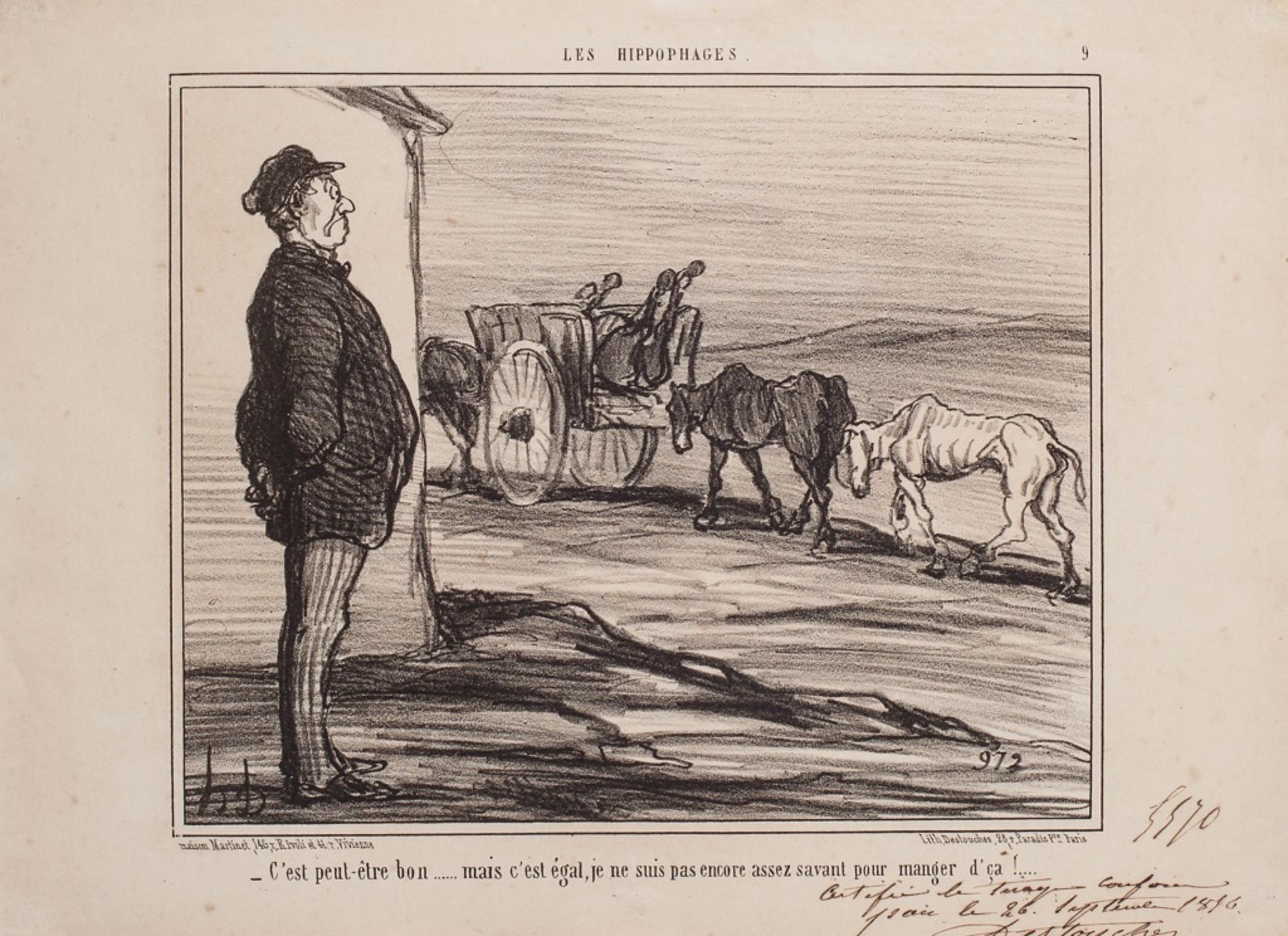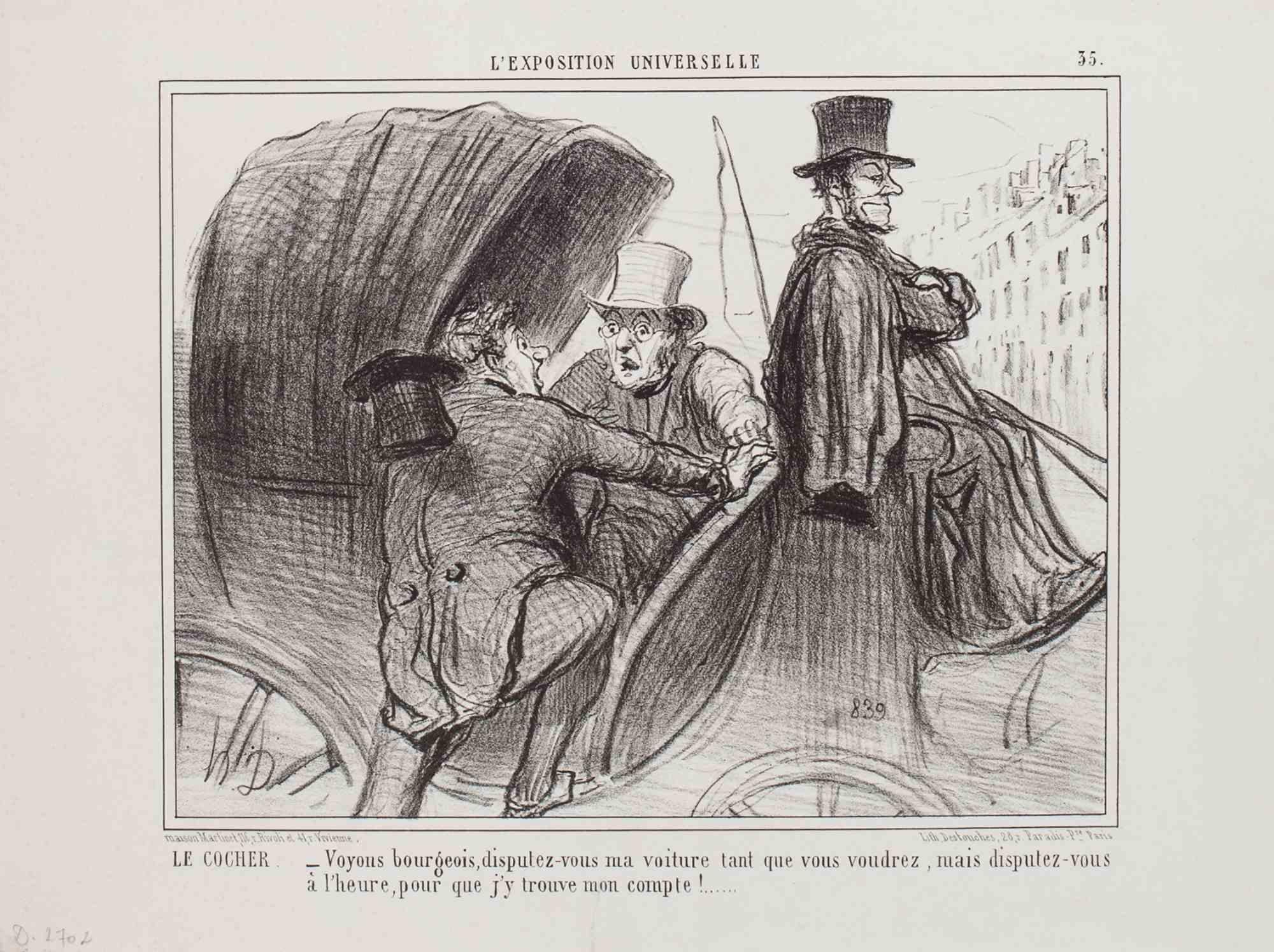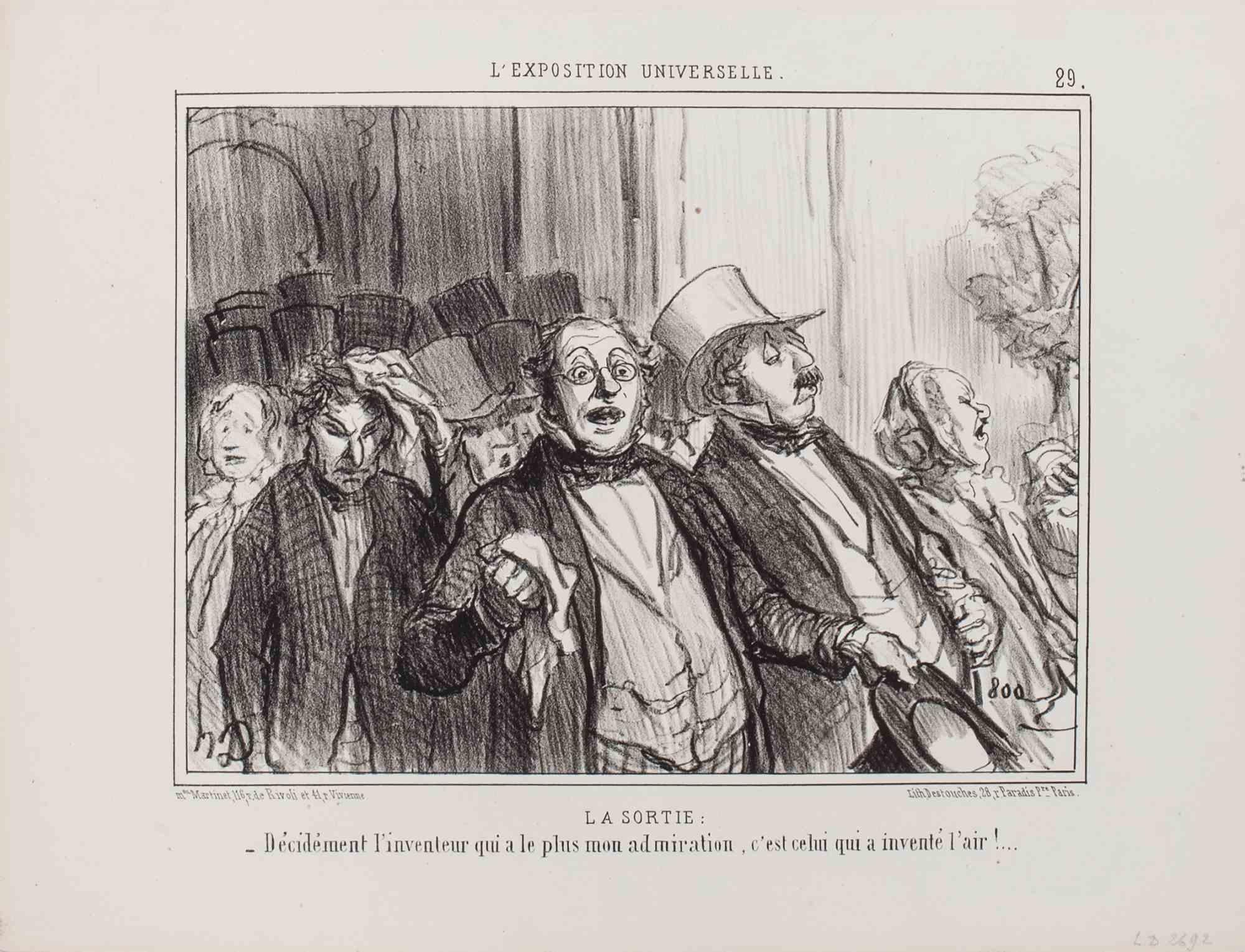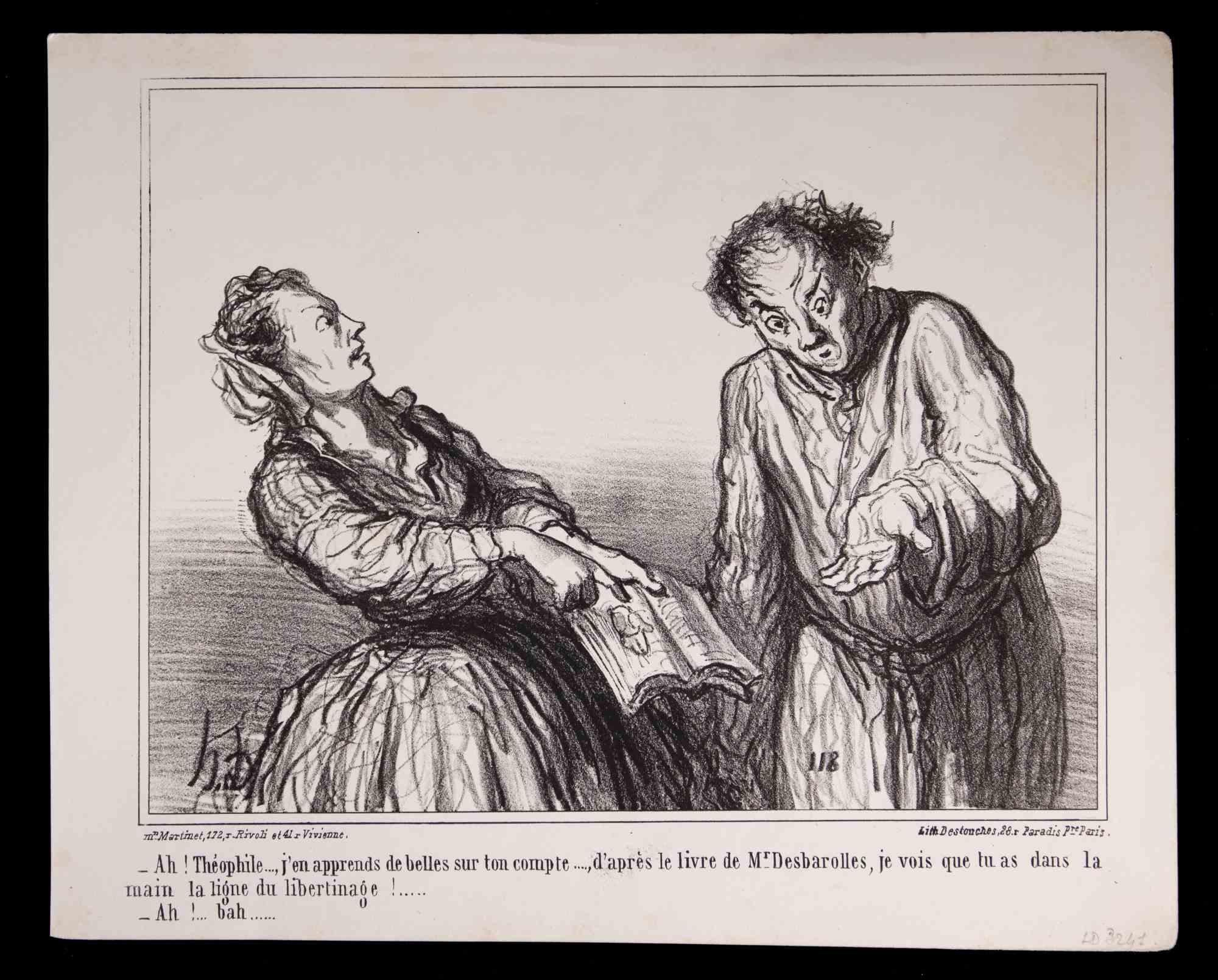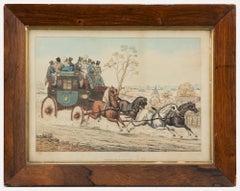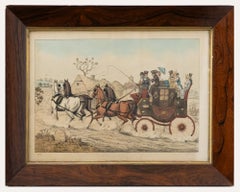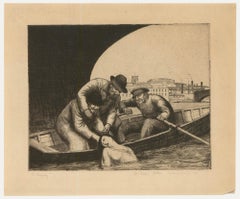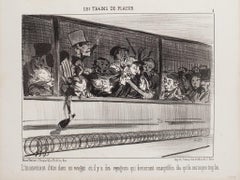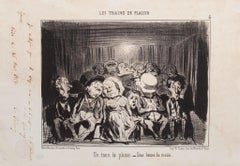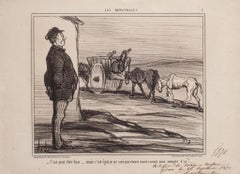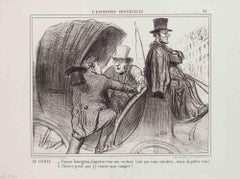Items Similar to After Honoré Daumier (1808-1879) - Lithograph, Le Wagon de Trosieme Classe
Want more images or videos?
Request additional images or videos from the seller
1 of 7
UnknownAfter Honoré Daumier (1808-1879) - Lithograph, Le Wagon de Trosieme ClasseUnknown
Unknown
$690
£533.69
€607.57
CA$990.73
A$1,082.40
CHF 567.29
MX$12,924.22
NOK 7,179.11
SEK 6,694.37
DKK 4,537.59
About the Item
A posthumous lithograph of Honoré Daumier's "Le Wagon de Troisième Classe" ("The Third Class Carriage"). Ordinary working-class Parisians were frequent subjects of Daumier's work. Here, a nursing mother, elderly woman, and young boy sit in a third-class railway carriage. Daumier depicts the poverty and fortitude of working-class travellers with characteristic empathy and social observation.
Inscribed "de h Daumier" and numbered 354/500 in pencil to the lower margin. On paper.
- Creation Year:Unknown
- Dimensions:Height: 10.24 in (26 cm)Width: 13.39 in (34 cm)
- Medium:
- Period:
- Condition:Signs of wear consistent with age, including discolouration and dirtying, to the paper. Small pinholes to the corners. Small tear to the lower left corner.
- Gallery Location:Corsham, GB
- Reference Number:Seller: sh9001stDibs: LU881316748292
About the Seller
4.9
Platinum Seller
Premium sellers with a 4.7+ rating and 24-hour response times
Established in 2010
1stDibs seller since 2018
1,432 sales on 1stDibs
Typical response time: 3 hours
- ShippingRetrieving quote...Shipping from: Corsham, United Kingdom
- Return Policy
More From This Seller
View AllAfter Henry Alken - Early 20th Century Lithograph, Nearing the Journey's End
Located in Corsham, GB
A crisp early 20th century lithograph with hand colouring, after English painter and engraver Henry Thomas Alken (1785-1851). The scene shows a period coaching party near their journ...
Category
20th Century Figurative Prints
Materials
Lithograph
After Henry Alken - Early 20th Century Lithograph, An Awkward Corner
Located in Corsham, GB
A crisp early 20th century lithograph with hand colouring, after English painter and engraver Henry Thomas Alken (1785-1851). The scene shows a period coaching party taking an awkwar...
Category
20th Century Figurative Prints
Materials
Lithograph
$268 Sale Price
20% Off
Frederick George Austin (1902-1990) - 1915 Etching, A Tragedy
Located in Corsham, GB
An evocative etching by the prominent artist Frederick George Austin (1902-1990). Signed and dated to the lower margin. Provenance: direct from the granddaughter of the artist. On pa...
Category
Early 20th Century Figurative Prints
Materials
Etching
Edmund Blampied (1886-1966) - Framed Early 20th Century Etching, San Sebastian
By Edmund Blampied
Located in Corsham, GB
An original early 20th century etching of San Sebastian Harbour by Edmund Blampied (1886-1966). Well presented in a narrow gilt effect frame. Signed in pencil to the lower margin. On...
Category
20th Century Figurative Prints
Materials
Etching
Attrib. William Papas (1927-2000) - 20th Century Ink Drawing, The Innkeeper
Located in Corsham, GB
A comical sketch of a Jolly Innkeeper captured alongside other characters. Attributed to political cartoonist and caricaturist William 'Bill' Papa...
Category
20th Century Portrait Drawings and Watercolors
Materials
Pen
After Sigmund Freudenberger (1745-1801) - Etching, Departure of the Soldier
Located in Corsham, GB
A soldier takes his final leave from his family in this poignant scene, set within a rustic farmyard. The piece was acquired as part of a pair; the companion piece depicts the soldie...
Category
19th Century Figurative Prints
Materials
Etching
You May Also Like
L’inconvénient d’être dans un wagon - Lithograph by H. Daumier - 1852
By Honoré Daumier
Located in Roma, IT
L’inconvénient d’être dans un wagon is a b/w lithograph (plate n.5) from the satirical print series “Les Trains de Plaisir”, composed of caricatures “de mœurs” (of behaviours), realized by Honoré Daumier (France, 1808-1879) in 1852.
This plate, published by the Maison Martinet, Paris, appeared on the French periodical, Le Charivari, in 1852. Printed by the lithographer Charles Trinocq.
Reference: H. Delteil, Catalogue Raisonnée, 2329.
Inscriptions: Monogrammed on stone, h.D, 433.
Complete Caption: L’inconvénient d’être dans un wagon où il y a des voyageurs qui deviennent susceptibles dis qu’ils ont un peu trop bu.
Superb specimen, full margins, depicting a dark train-wagon with the consequent human chaos, is in excellent condition, with imperceptible aging signs (light redness and some traces of oxydation on the margins).
A copy of the same plate is preserved at the permanent collection of the National Gallery of Art, Washington, D.S.
Bibliography:
1906 Delteil, Loys. Le peintre-graveur illustre. 31 vols. Paris: Published by the author, 1906-1926. Reprint. New York: Collectors Editions, Da Capo Press, 1969. Vol. 30 (Albert Besnard) is by Louis Godefroy...
Category
1850s Figurative Prints
Materials
Lithograph
Un Train de Plaisir - Lithograph by H. Daumier - 1852
By Honoré Daumier
Located in Roma, IT
Un Train de Plaisir is the b/w lithographes plate (n.6) from the satirical print series “Les Trains de Plaisir”, composed of caricatures “de mœurs” (of behaviours), realized by Honor...
Category
1850s Modern Figurative Prints
Materials
Lithograph
C’est peut-être bon… - Lithograph by H. Daumier - 1856
By Honoré Daumier
Located in Roma, IT
C’est peut-être bon… is a original b/w lithograph (plate n.9), from the satirical series Les Hippophages, composed of 10 plates of caricatures “de mœurs” (of behaviours), realized by...
Category
1850s Figurative Prints
Materials
Lithograph
Le Cocher - Lithograph by Honoré Daumier - 1855
By Honoré Daumier
Located in Roma, IT
Beautiful lithograph with margins, realized by Daumier in 1855.
It belongs to the Series "L'Exposition Universelle".
Ref. Delteil 2702
Category
1850s Modern Figurative Prints
Materials
Lithograph
La Sortie - Lithograph by Honoré Daumier - 1853
By Honoré Daumier
Located in Roma, IT
Beautiful lithograph with margins, realized by Daumier in 1855.
It belongs to the Series "L'Exposition Universelle".
Ref. Delteil 2692.
Category
1850s Modern Figurative Prints
Materials
Lithograph
Ces Bons Parisiens - Lithograph by Honoré Daumier - 1859
By Honoré Daumier
Located in Roma, IT
Lithograph realized by Daumier in 1859.
Belongs to the Series "Ces Bons Parisien".
Ref. Delteil 3241
Very good condition
Category
1850s Modern Figurative Prints
Materials
Lithograph
